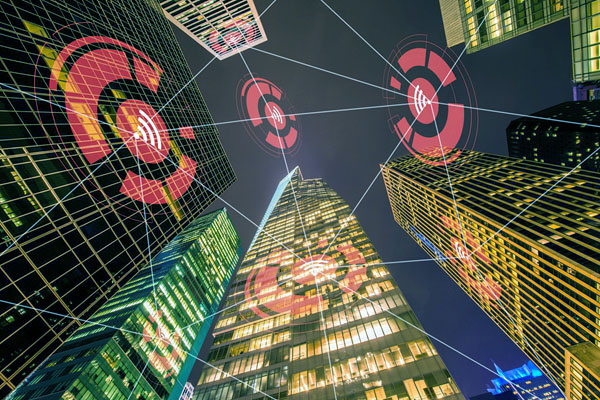In recent years, under the background of the rapid development of cloud computing, big data, artificial intelligence, and the Internet of Things, smart buildings are becoming an important driving force in the transformation and upgrading of the traditional construction industry. In fact, smart buildings are not the same as smart buildings. Both smart buildings and smart buildings are different stages of the development of the construction industry. According to the intelligence level of the building, it can be roughly divided into three stages: traditional building, intelligent building and smart building.


Smart buildings are living entities with perception
In my country’s “Intelligent Building Design Standards”, smart buildings are defined as: using buildings as a platform, based on the comprehensive application of various types of intelligent information, integrating architecture, systems, applications, management and optimization combinations, with the ability to sense, The comprehensive intelligence capabilities of transmission, memory, reasoning, judgment and decision-making form an integration of people, buildings and the environment that coordinate with each other to provide buildings with a safe, efficient, convenient and sustainable functional environment for people. Therefore, smart buildings are not just smart buildings. They emphasize the relationship between people, the environment, and buildings. They are living beings with perception. Buildings also have life and can continuously evolve.
The world’s first smart building appeared in 1984, and since then the concept of smart buildings has gradually emerged. my country’s smart building industry began to develop in the 1990s. Although my country’s smart building construction started later than developed countries, its applied technologies and related standards are on par with the international advanced level.
In 2017, Alibaba released the “Smart Building White Paper” which shocked the industry and outside. The white paper provided an overview of the characteristics of smart buildings and mainly included four aspects: First, the environment, smart buildings emphasize the relationship with the environment; second, the economy , to continue a cost-effective economy; the third is society, emphasizing the relationship between buildings and people; the fourth is technology, realizing the functions of smart buildings through technical means such as the Internet of Things, artificial intelligence, and cloud computing.
The scale of the smart building market cannot be underestimated
Whether it is a new building or a renovated building, the market size of smart buildings cannot be underestimated. According to the “Smart City Construction Development Prospects and Investment Forecast Analysis Report” released by the Qianzhan Industry Research Institute, it is estimated that from 2016 to 2020, the scale of my country’s building intelligence market will continue to maintain a growth of about 30%, and may reach 640 billion yuan by 2020. In the next few years, smart buildings, green buildings, and prefabricated buildings will become the main development directions of the construction industry.
In terms of building types, smart buildings in my country are mainly commercial buildings, office buildings and residential buildings. According to the “2018-2022 China Intelligent Building Industry Market Analysis and Research Report” by the New Thinking Industry Research Center, North China accounts for the largest proportion of smart buildings in my country, reaching 33.4%; followed by East China, accounting for 28.5%; South China’s The share is 20.4%. These three major regions have relatively developed economies and are the concentration of major smart buildings in our country.
What are the key issues in the field of smart buildings?
Although the development potential of smart buildings is unlimited, due to technical and other reasons, the penetration rate of smart buildings in my country is still low, the industry is not fully developed, and there are few representative related companies. User needs are difficult to meet, and user pain points are common. And other issues. Some professionals analyzed that this is mainly due to the complex coordination between various systems of smart buildings, low project prices, lack of experience of manufacturers, and the demands of multiple parties, such as strong and weak current design, plumbing design, mechanical and electrical installation, etc., and problems arise on one side. , which will cause subsequent processing to be quite complicated.
In addition, intelligent systems in smart buildings often have problems such as being difficult to use or being afraid to use them. A large part of the reason is that the integrators have installed and debugged the systems during the construction phase. However, during the putting into use of the building, due to changes in demand, As a result, the system cannot keep up with demand, and some systems are too professional and have relatively high technical requirements, requiring professionals to debug and use them. A series of problems in the construction process of smart buildings still exist.
Therefore, although the market size of smart buildings is huge, there are still many key points that need to be broken through in the process of promoting or popularizing smart buildings, not only the technical requirements, but also the coordination and cooperation of related parties, and most importantly, the satisfaction The changing needs of users. The construction of smart buildings in our country still has a long way to go.